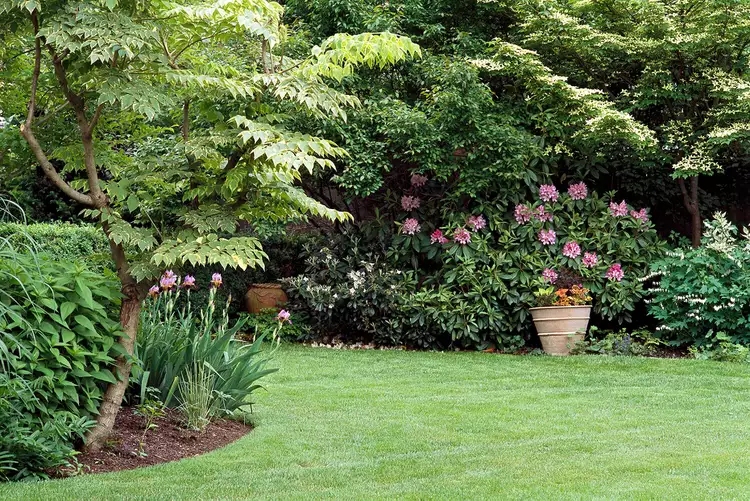Even if you do everything to keep a lawn in tip-top shape, including applying an organic fertilizer twice a year, aerating periodically to discourage thatch buildup and soil compaction, watering regularly, and properly mowing it, you may still need to do some lawn repair.
One of the most important parts of lawn repair is figuring out what caused the problem. Sometimes, an accident, such as a fertilizer spill, creates a bare spot in the lawn. Or there could be a plant disease, destructive insects, or competition for light and moisture from overgrown neighboring plants. Correct these issues first so grass can grow in these spots again. Then, start lawn repair with fresh seed or sod. You'll need a few tools to fix larger areas of your lawn. If you're working on a small patch, you can get away with only grass seed, topsoil, and a trowel.
What You'll Need
Equipment / Tools
Lawn Repair
- Lawn mower
- Rake
- Seed spreader
- Lawn roller (optional)
Materials
Lawn Repair
- Grass seed
- Topsoil or compost (optional)
- Water
Instructions
Lawn Repair: Patching with Seed
In spring, mow the existing grass as closely as possible; be careful not to scrape the crowns of the plants (if you’re filling a spot that’s already bare, you can skip mowing). Remove the clippings in the area to be repaired so the seed will have direct contact with the soil. Remove any dead grass or weeds.
-
Rake Soil
Use a garden rake to rough up the soil between the grass plants. This, and the stubble of the freshly mown grass, will make a good seedbed for the new seed you’re adding to the lawn repair area. Rake the soil smooth and level.
-
![sprinkle grass seed on bare spots]()
![saturate topsoil and grass seed with hose]()
PHOTO: Brie Passano PHOTO: Brie Passano Spread Seed
Sprinkle seed thickly in the lawn repair area. Use a variety that corresponds to the surrounding grass if possible. Otherwise, use a mixture of grasses appropriate for your region. Cover seeds with a light sprinkling of topsoil or a thin layer of compost. Then, lightly water the area to help the seeds germinate. You can also use a lawn repair mix ($23, The Home Depot) that includes grass seed and mulch or soil and sprinkle that on top of the bare patch. Mow the new grass when it reaches about 3 inches tall.
Lawn Repair Seeding Tip
Spread a thin layer of topsoil or straw over the lawn repair area you’ve just patched with seed. This protects the seed and, later, the sprouts from wind or getting washed away. More importantly, covering the soil reduces moisture loss. Regular watering may be required to keep germinating seeds moist.
:strip_icc():focal(824x0:826x2):format(webp)/use-blade-cut-piece-sod-fit-cca942f4-65b4ba6deed84c85a2cff1134671e9f3.jpg)
:strip_icc():focal(824x0:826x2):format(webp)/place-cut-piece-sod-bare-spot-fc2290ed-52c6f56a93ce426083beb03697006878.jpg)
Lawn Repair: Patching with Sod
Laying sod is the quickest technique for lawn repair to patch a dead or damaged turf area. You can lay it any time during the season. Prepare the soil the same way you would for patching with seed. Keep the area an inch or so below grade so the new grass will be level with the lawn. Then cut a piece from the strip of sod to fit the repair site. Press it firmly onto the soil, placing its edges snugly against the surrounding lawn. Walk on it to settle it into place. Water deeply and often until roots grow into the soil beneath the sod.

:strip_icc():focal(824x0:826x2):format(webp)/spreading-grass-seed-dead-patches-6b697127-165eafa5aead46b99740c7bf4de69c1f.jpg)
:strip_icc():focal(995x0:997x2):format(webp)/spray-grass-seed-topsoil-hose-88532a5e-0e12e3d4427e476fabc776a63318dd61.jpg)



















